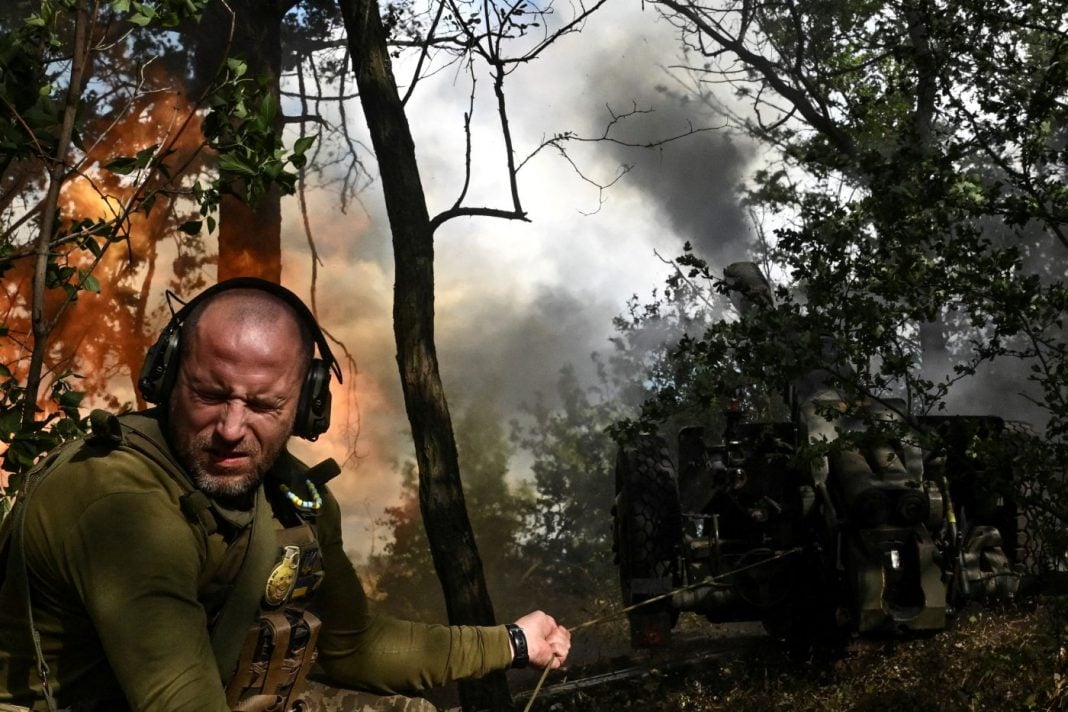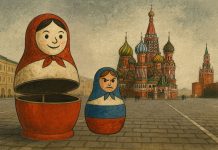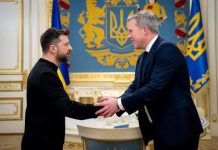Russia’s old-new military doctrine, Ukraine’s struggle, and the future of the West.
By Edward Lucas, for CEPA
As European decision-makers head for their summer break (“I am out of the office with no access to email until the end of August…”), they should pack a copy of Bob Seely’s new book to fill the leisurely weeks that await them. A Conservative MP for seven years, Seely was defeated in Britain’s general election last July. But his political setback is everyone else’s gain. His rapidly written “The New Total War” is a sizzling read. It draws on Seely’s decades of experience as a soldier, doctoral student, and foreign correspondent, including a first trip to still-Soviet Ukraine in 1990, and many months spent there in the past year.
The book’s subtitle, “From Child Abduction to Cyber Attacks and Drones to Disinformation – Russia’s Conflict with Ukraine and the West” makes his main point. Ukraine is the military centre of a wider war, fought with rapidly evolving tactics. On the battlefield, Russia and Ukraine are both innovating fast. NATO countries are lagging badly. They are also (with some important exceptions such as Finland) struggling to match Russia’s use of information, digital sabotage, and other disruptive measures. The victims may not interpret these attacks as war, but the intent behind them is to divide, demoralize, dominate, and defeat, and at a far lower cost and risk to the aggressor than would be involved in full-scale confrontation. In short, the Kremlin’s strategy unites the Soviet-era ideas of ideological struggle (“borba”) and the military dimension of war (“voina”). The resulting xenophobic nationalism serves as a domestic political weapon, he notes, rendering the Russian public “pliable”.
Seely’s analysis is not wholly new. The Baltic states were warning about Russian revanchism and ethnonationalism as far back as the early 1990s. But this is the first book since the full-scale invasion of 2022 to bring together so vividly the lessons from the Ukrainian frontline and the West’s strategic weakness. Wars are ultimately fought by countries, not armies. Russia integrates all the tools of state power behind its goals. It practices integration. The West, mostly, just talks about it.
Seely cites an array of key Russian-language sources to make his case. He could have also included Sergei Karaganov, the hawkish Kremlin adviser who in 1992 launched what became known as the “Karaganov doctrine”, arguing that the Russian Federation had the right and duty to protect the rights of “Russian-speakers” outside the country’s borders: people “whose rights Russia arguably does very little to protect inside its borders but seems exceptionally keen to defend when they are in neighbouring states,” Seely notes caustically. In a recent interview with French analysts, Karaganov says “Russia is a country of warriors; it has never known how to live outside a state of war. Waging war is in the Russians’ genes.” He now argues for a nuclear confrontation with the West in order to ensure Russian victory in Ukraine; Seely argues in a gloomy epilogue that Russia could indeed resort to its nuclear arsenal if it was losing catastrophically.
Yet, Seely’s main message is that Ukraine’s friends must do more. Ukrainians’ will to resist Russia is strong, but not inexhaustible. Defeat in Ukraine spells catastrophe for Europe. He offers some thoughtful — and controversial — suggestions for Ukrainians, including improving the quantity and quality of the infantry’s non-commissioned officers, and weaponizing rather than shunning the Russian language. But his most salient recommendations are to the West, for better physical, political, and psychological preparation for the conflict that is already under way. Custodians of Europe’s security who start reading Seely’s book on the beach may find themselves wanting to curtail their holidays and get back to work.
By Edward Lucas, for CEPA
Edward Lucas is a Senior Fellow and Senior Advisor at the Center for European Policy Analysis (CEPA).
Europe’s Edge is CEPA’s online journal covering critical topics on the foreign policy docket across Europe and North America. All opinions expressed on Europe’s Edge are those of the author alone and may not represent those of the institutions they represent or the Center for European Policy Analysis. CEPA maintains a strict intellectual independence policy across all its projects and publications.





